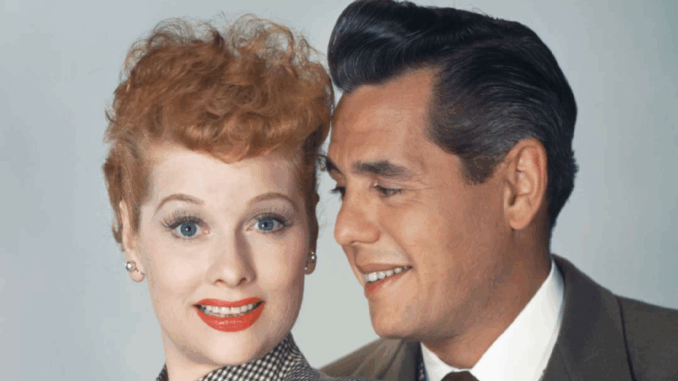
Lucille Ball and Desi Arnaz fought CBS, filmed on 35 mm and accidentally invented reruns — forever changing how TV is made and watched.
More than 70 years after it first aired, I Love Lucy remains the blueprint for everything television would become. On the Monday, October 13 premiere of TV We Love, industry experts break down why — but not for the reasons you might expect.
Yes, I Love Lucy broke barriers with its interracial marriage, an on-screen pregnancy storyline and a female comedy lead unlike any before her. But the real revolution happened behind the camera.
“If you can only use one television show to kind of represent all of American television, I think it’d have to be I Love Lucy,” says Jeff Zucker, former head of NBC Universal.
When CBS first approached Lucille Ball in 1950, executives wanted to capitalize on her film success — but balked when she insisted her real-life husband, Cuban-American actor and musician Desi Arnaz, play her TV husband.
“CBS didn’t want Desi because they just didn’t think that anyone would want to watch a show with a mixed-race marriage. It was a racist decision,” explains Dana Sumner-Pritchard, host of The Ricardo Project podcast. “Lucy took CBS’ very generous offer and said, ‘That’s super great. I won’t do it without my husband.’ And CBS was like, ‘Why are you making demands on us?’ She says I’m not doing it without Desi. They said we’re not doing it with Desi.”
Ball refused to compromise and walked away. She and Arnaz toured a vaudeville act called My Favorite Husband to prove audiences loved their chemistry. CBS relented — and the pair forever changed how television was made.
Because videotape didn’t yet exist, Arnaz insisted on shooting I Love Lucy on 35 mm film so the show could be seen in high quality nationwide and so that the show would be forever captured. Up until this point, TV aired live and there was no recording of it after it aired. CBS resisted because filming that way was significantly more expensive. Arnaz agreed to a pay cut to defray the costs on one condition: that he and Ball own the negatives.
“CBS laughs about this in the negotiation and says to Desi, ‘Who’s gonna wanna watch them after they air?’” recalls Journey Gunderson, executive director of the National Comedy Center.
That “laughable” clause gave the couple complete ownership of their episodes — and accidentally invented the concept of reruns.
“They say, ‘We wanna produce the show ourselves and sell it to you,’ which flips the entertainment business model on its head,” Gunderson says.
From that moment, syndication was born. Every time a show airs in repeats or sells to streaming today, it is following the I Love Lucy blueprint.
“It really speaks to what a bold and brave woman she was,” Gunderson says. “She and Desi changed the business forever.”
Variety editor Michael Schneider adds, “Lucy and Desi created television as we know it. To this day, that’s how television still operates. That all started with I Love Lucy.”
